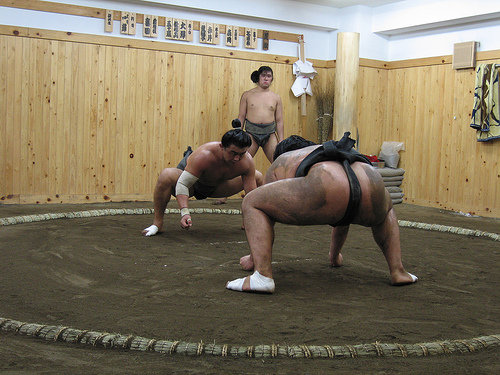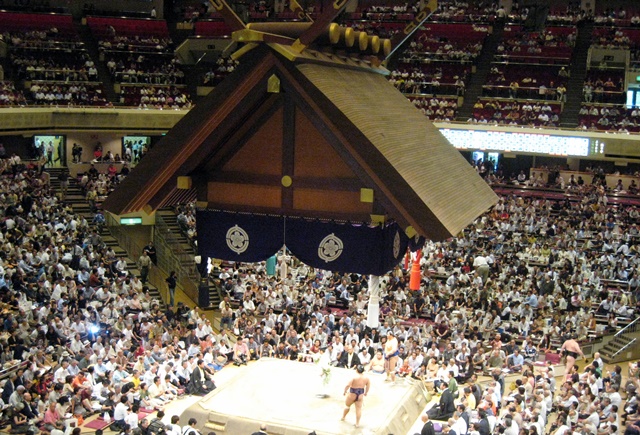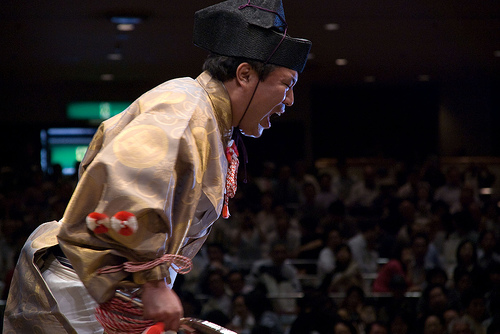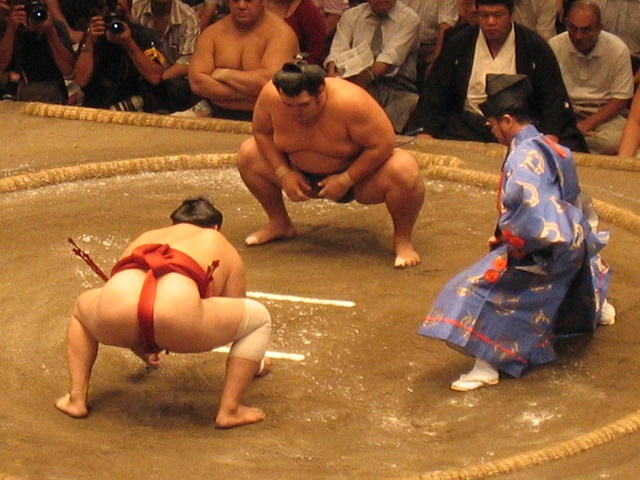Sumo wrestling or Sumo is a competitive full-contact wrestling sport where a rikishi (wrestler) attempts to force another wrestler out of a circular ring or the Dohyō or into touching the ground with anything other than the soles of his feet.
The sport originated in Japan, the only country where it is practiced professionally
It is generally considered a Gendai-budō (a modern Japanese martial art), however, this definition is misleading, as the sport has a history spanning many centuries.
Many ancient traditions have been preserved in sumo, and even today the sport includes many ritual elements, such as the use of salt purification.
This is from the days when sumo was used in the Shinto religion.
Sumo Origins

In addition to its use as a trial of strength in combat, sumo has also been associated with Shinto ritual, and even certain shrines carry out forms of ritual dance where a human is said to wrestle with a kami - a Shinto divine spirit, Over most of Japanese, recorded history, sumo's popularity has changed according to the whims of its rulers.
Professional sumo (ōzumō) roots trace back to the Edo period in Japan as a form of sporting entertainment.
Current professional sumo tournaments began in the Tomioka Hachiman Shrine in 1684 and then were held in the Ekō-in in the Edo period.
The Dohyō

Sumo matches take place in a dohyō a ring, 4.55 m (14.9 ft) in diameter and 16.26 m2 (175.0 sq ft) in area, of rice-straw bales on top of a platform made of clay mixed with sand.
A new dohyō is built for each tournament by the bout callers (or yobidashi).
At the center are two white lines, the shikiri-sen, behind which the wrestlers position themselves at the start of the bout.

A roof resembling that of a Shinto shrine may be suspended over the dohyō.
A ring or Dohyō, defined as something other than simply the area given to the wrestlers by spectators, is also believed to have come into being in the 16th century as a result of a tournament organized by the then principal warlord in Japan, Oda Nobunaga.
At this point, wrestlers would wear loose loincloths rather than the much stiffer mawashi wrestling belts of today.

During the Edo period, wrestlers would wear a fringed decorative apron called a kesho-mawashi during the match, whereas today these are worn only during pre-tournament rituals.
Most of the rest of the current forms within the sport developed in the early Edo period.
Usual Life of Rikishi

Life as a sumo wrestler is highly regimented, with rules.
Most sumo wrestlers are required to live in communal sumo training stables, known in Japanese as heya, where all aspects of their daily lives—from meals to their manner of dress—are dictated by strict tradition.
On the subject of meals,..Everyone has seen the Japanese sumo wrestlers fight, very few people have seen them eat.
The eating is even more frightening than the fighting in order to stay enormous the wrestlers consume food and lots of it!

During the sumo tournaments, Gyōji or referees must be fast on their feet as if one of the sumo wrestlers were to fall on him then only his fan and clogs would be sticking out of the tournament Dohyō!.
Sumo Outside Japan
Amateur sumo clubs are gaining in popularity in the United States, with competitions regularly being held in major cities across the country.
Amateur sumo is particularly strong in Europe. Many athletes come to the sport from a background in judo, and freestyle wrestling.
Brazil is another center of amateur sumo, introduced by Japanese immigrants who arrived during the first half of the twentieth century.
Some Eastern European athletes have been successful enough to be scouted into professional sumo in Japan, much like their Japanese amateur counterparts.
The most notable of these to date is the Bulgarian Kaloyan Stefanov Mahlyanov, (Sumo name Kotoōshū Katsunori), who is the highest-ranking foreign wrestler who was formerly an amateur sumo athlete.
Did You Know?
Some sumo organizations have minimum height requirements for their competitors.
In 1994, the Japanese Sumo Association required that all sumo wrestlers be a minimum 1.73 m (5'8") in height.

